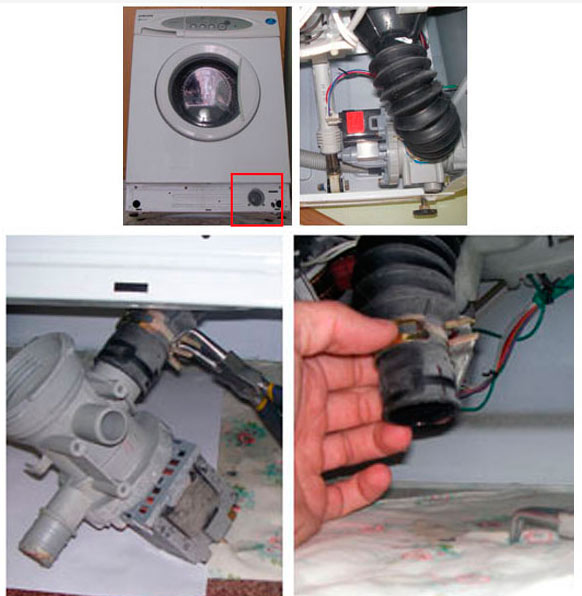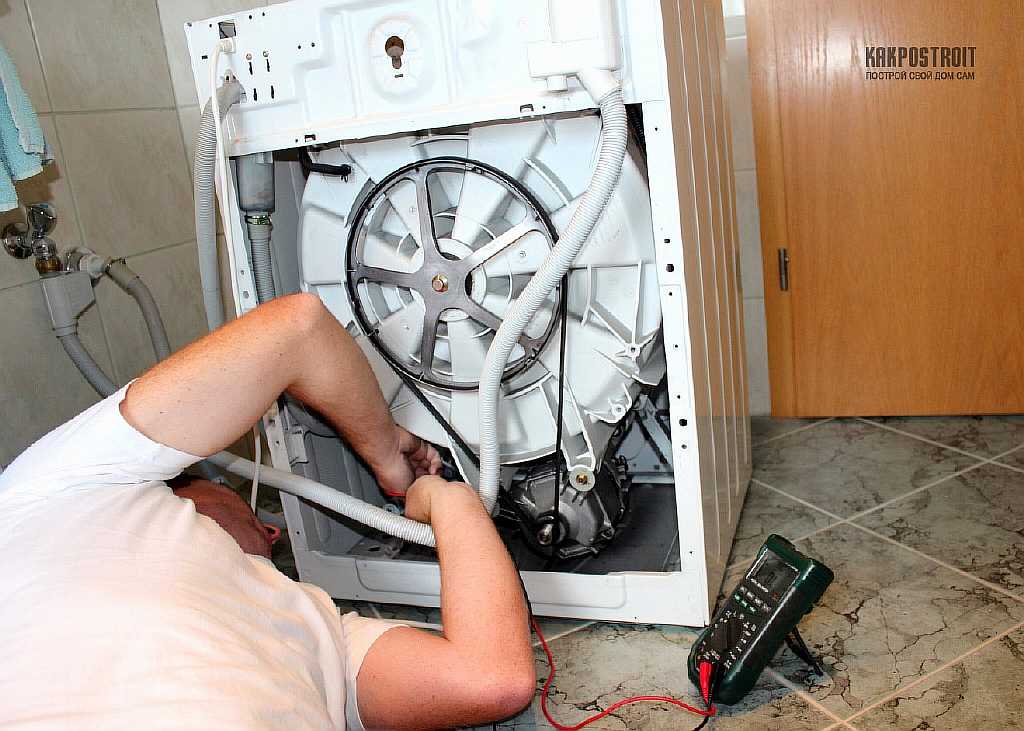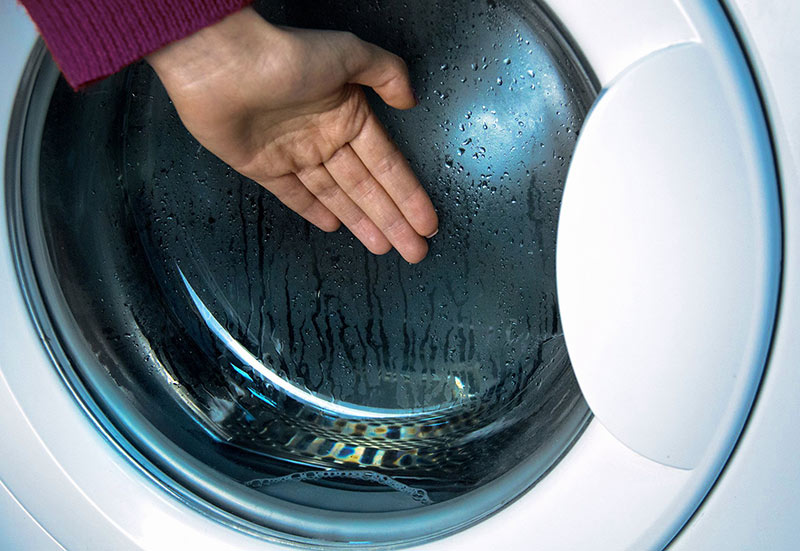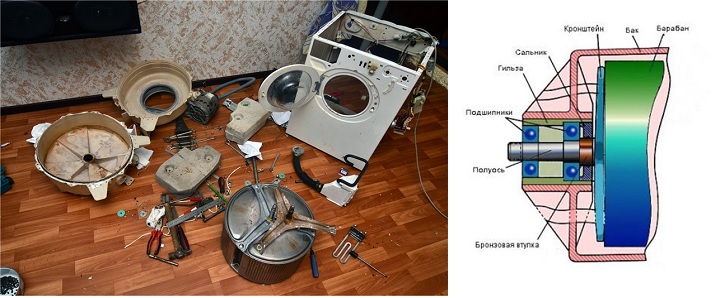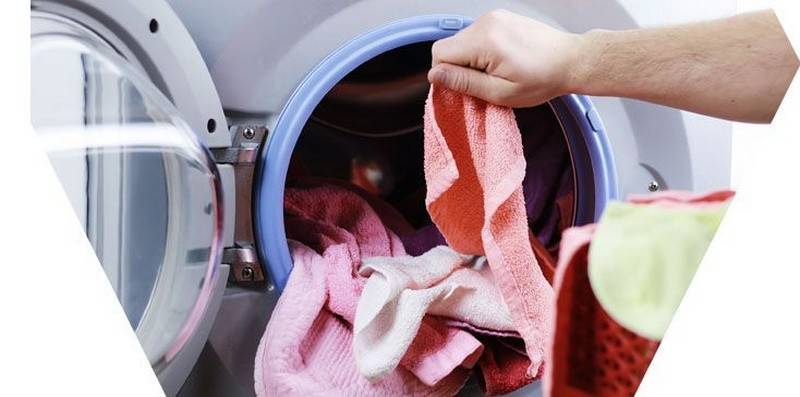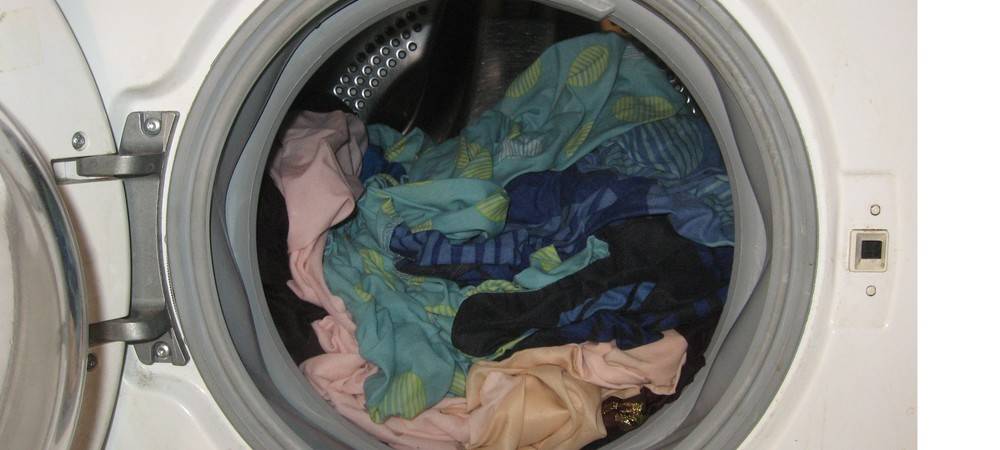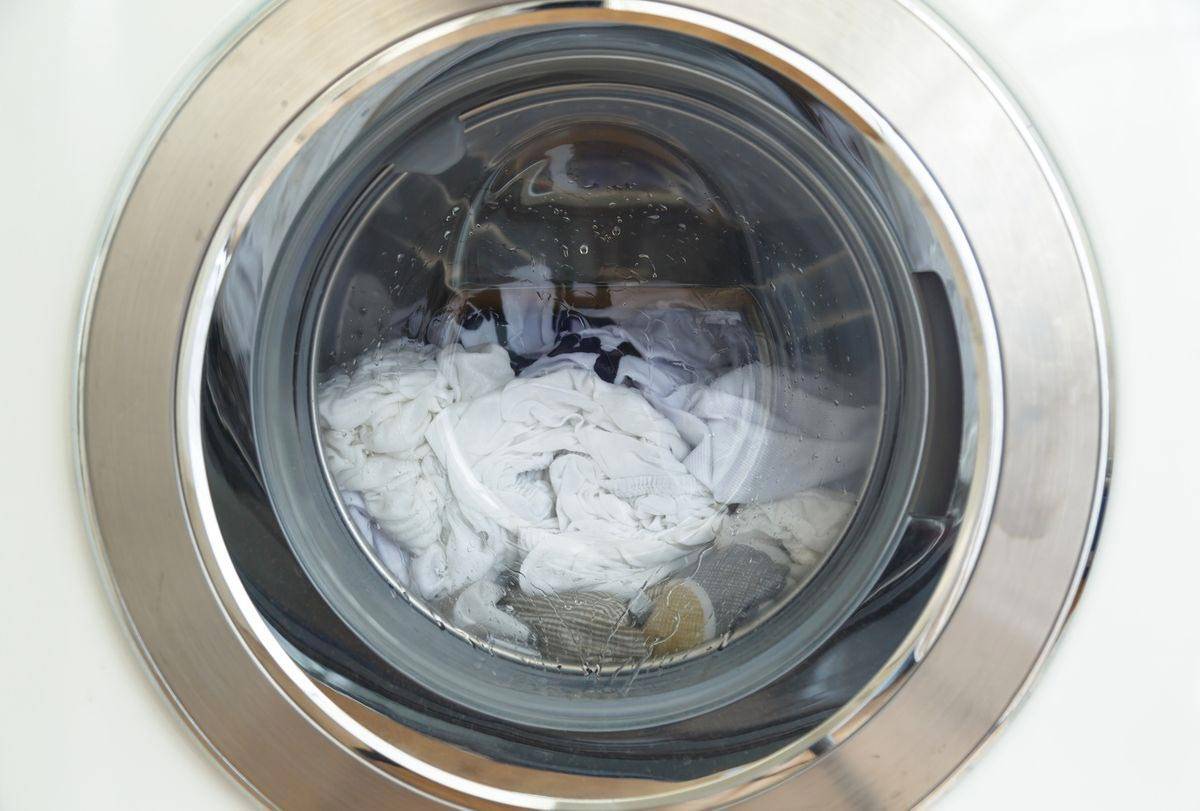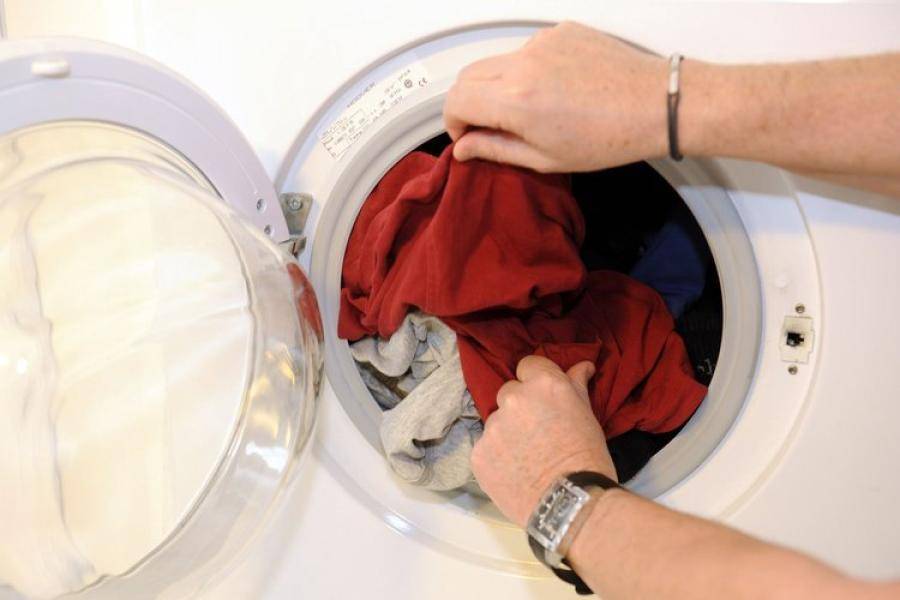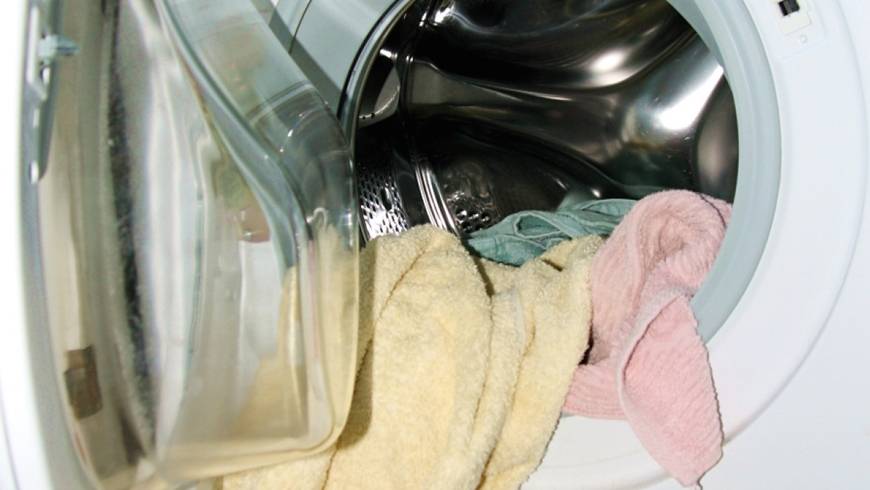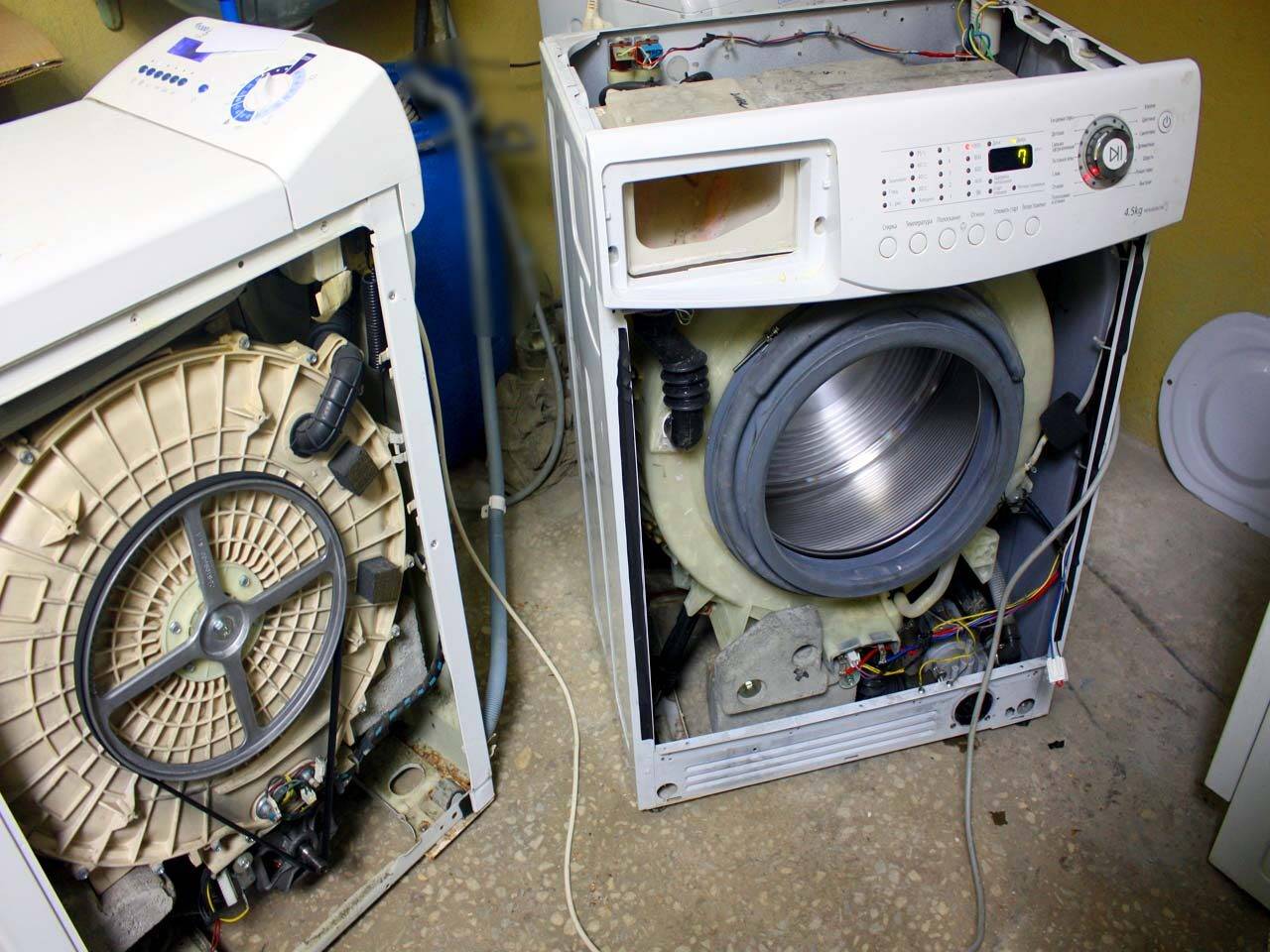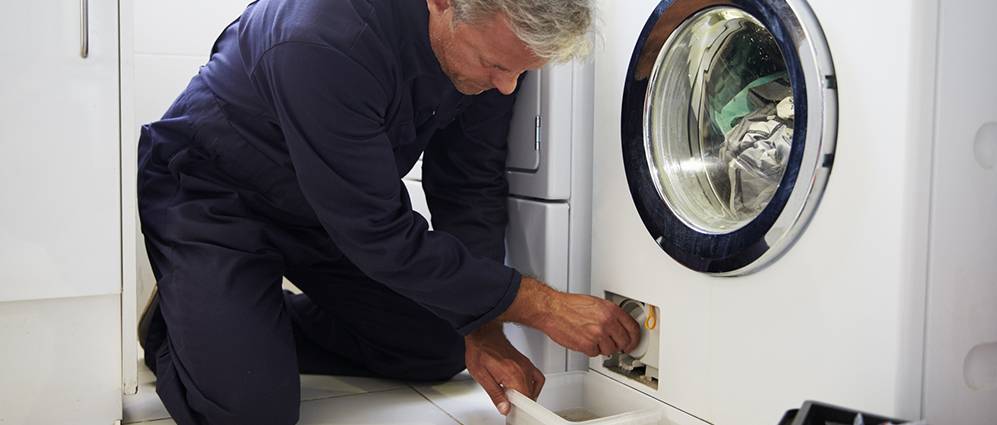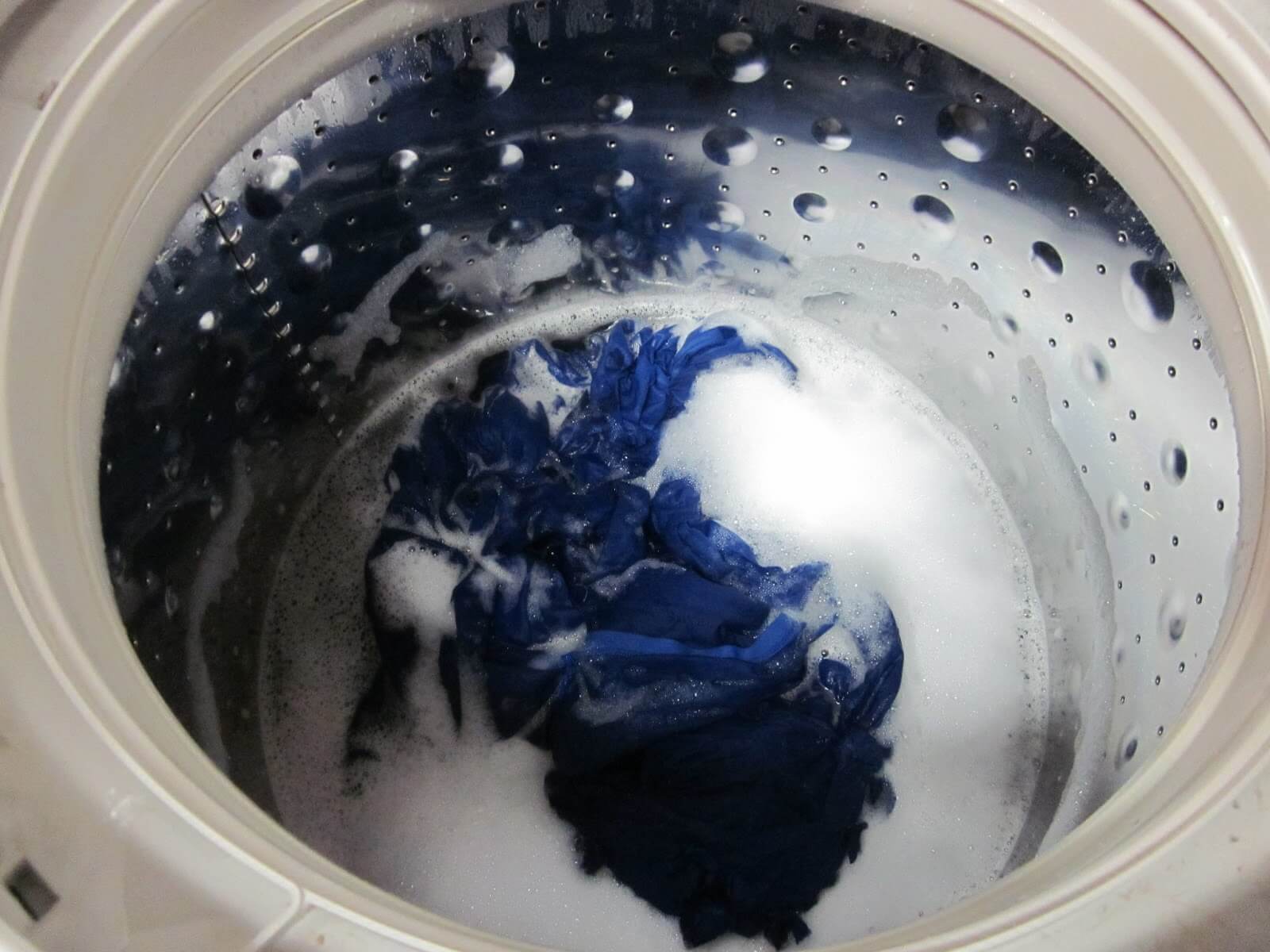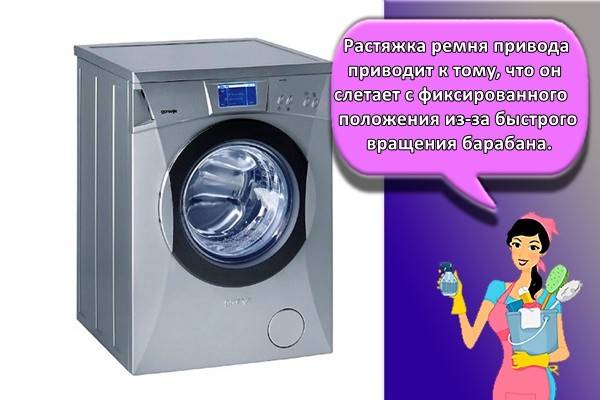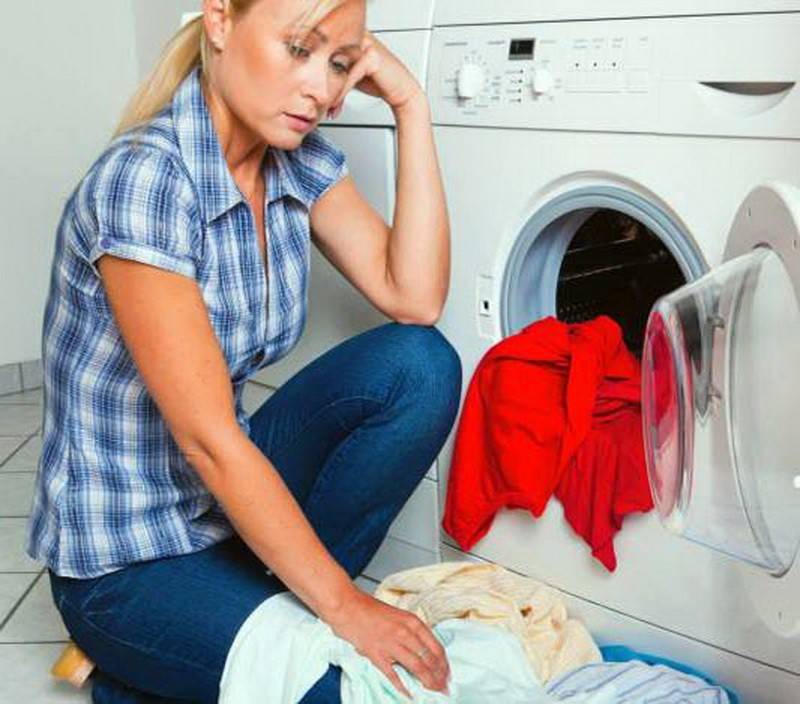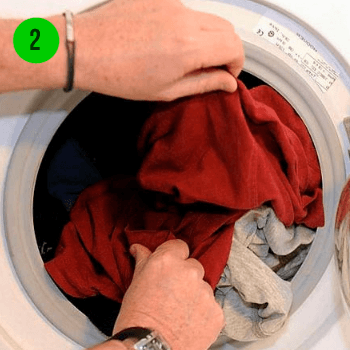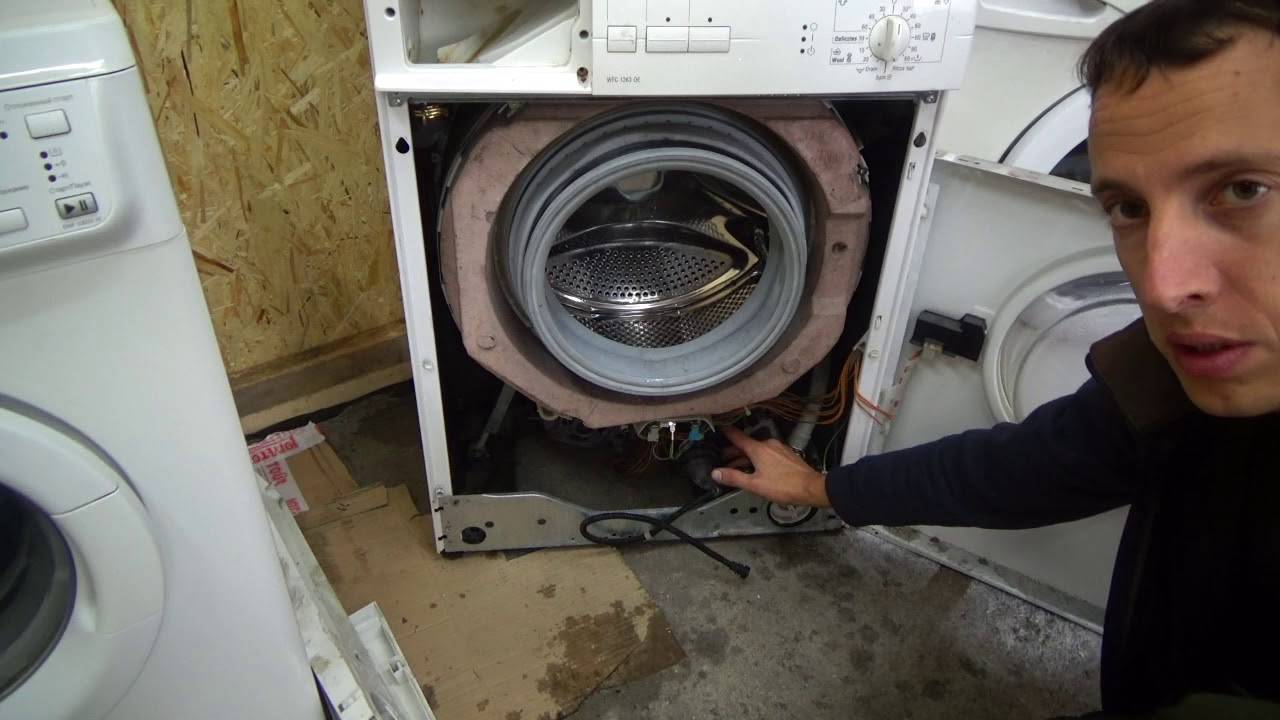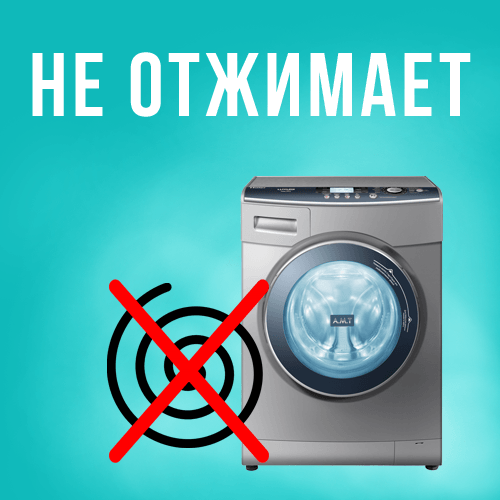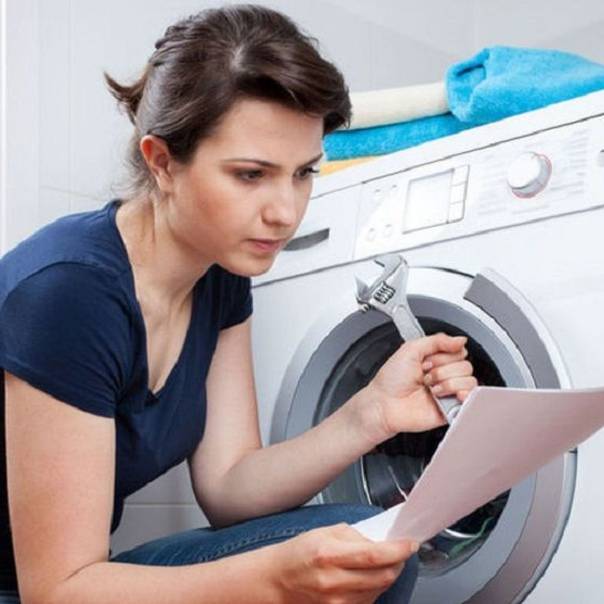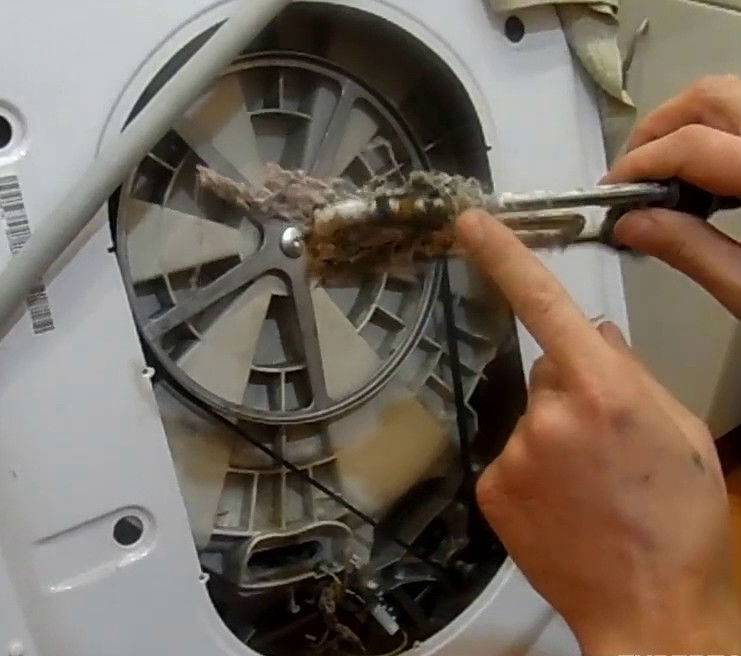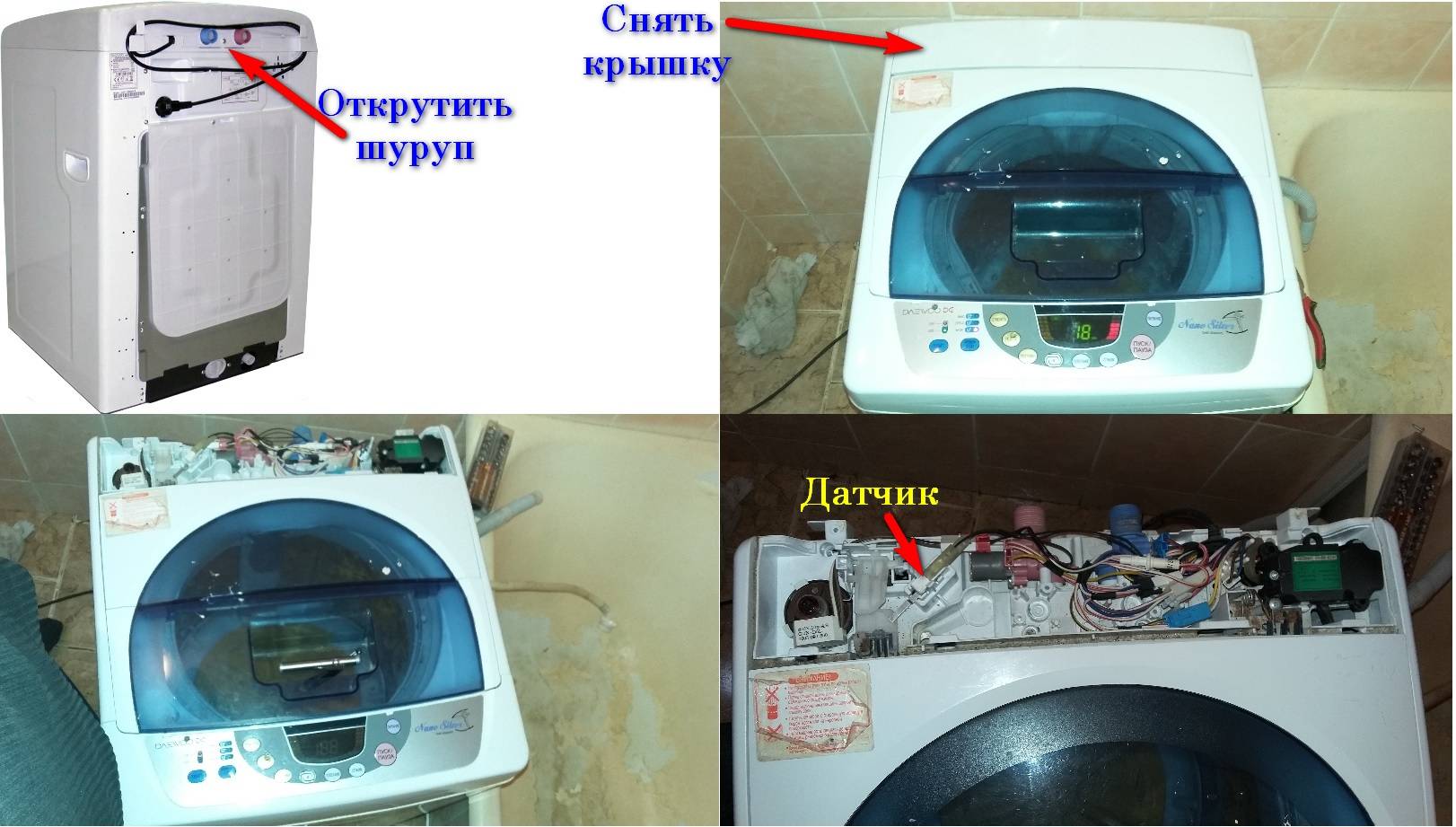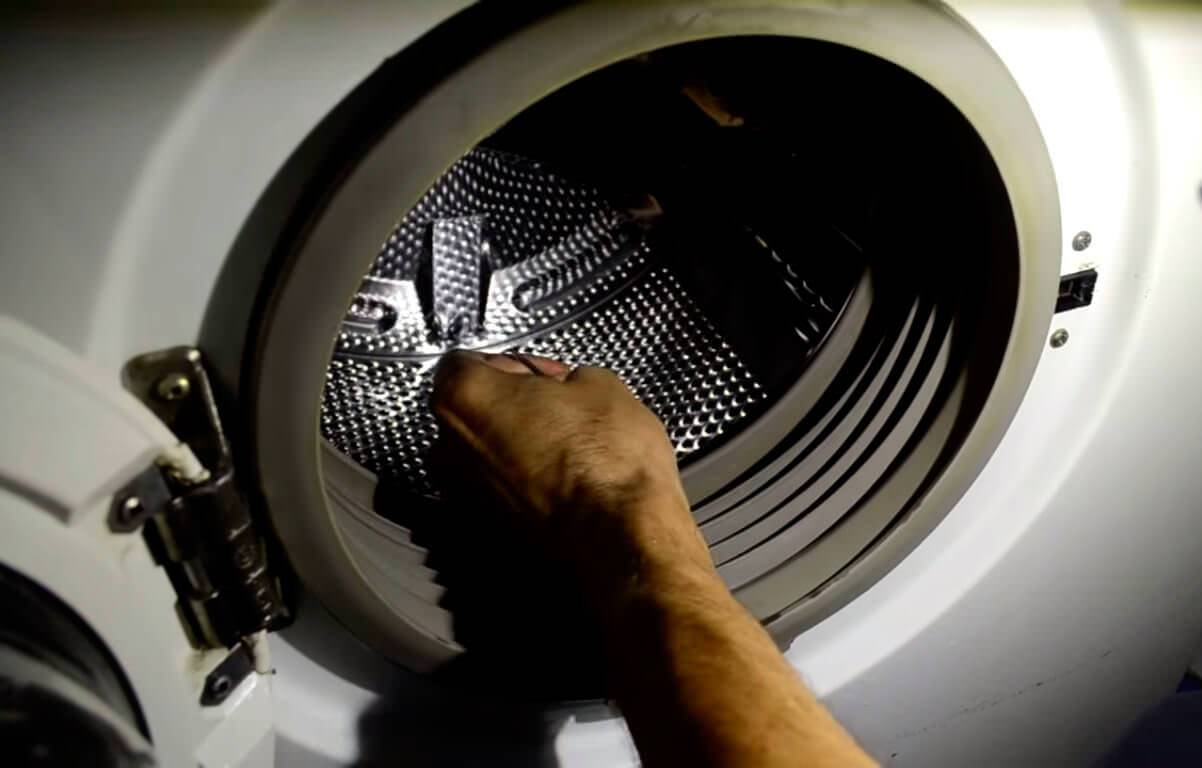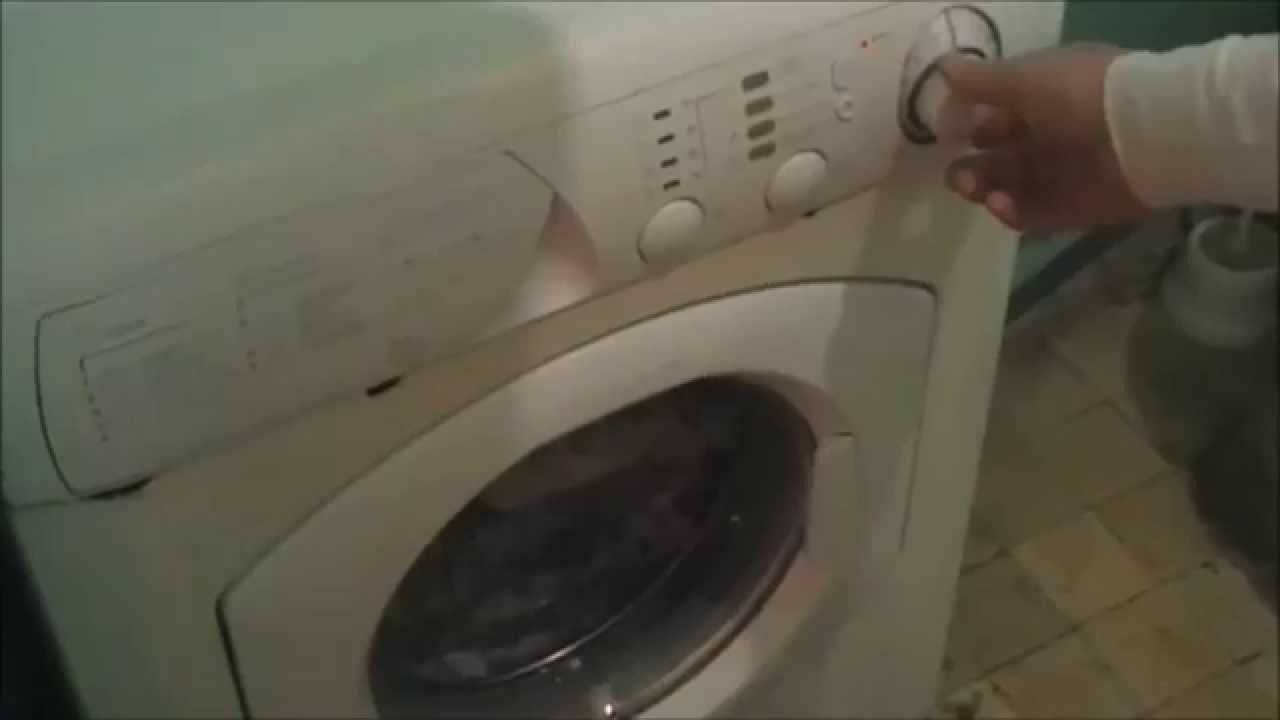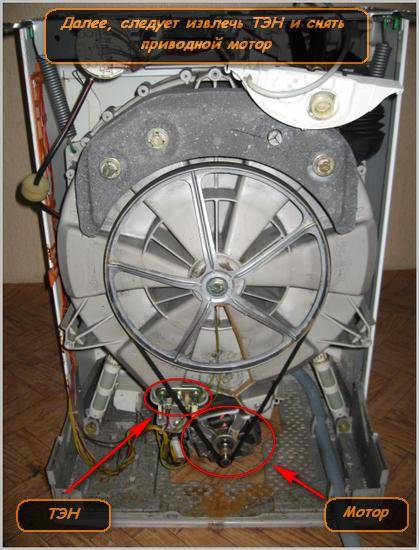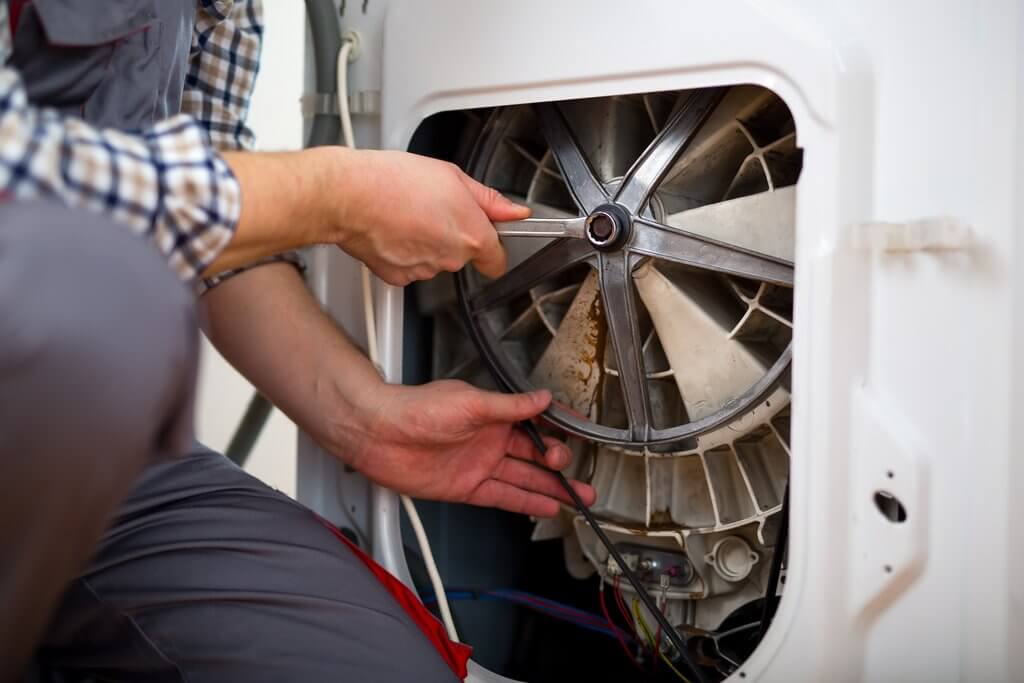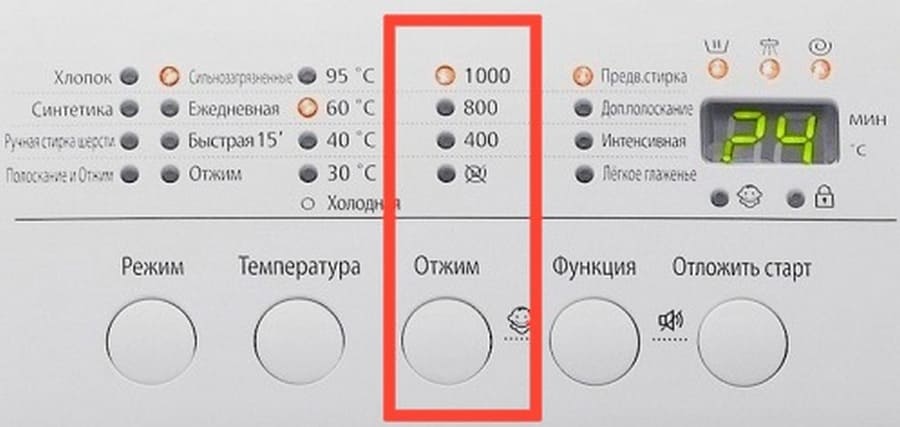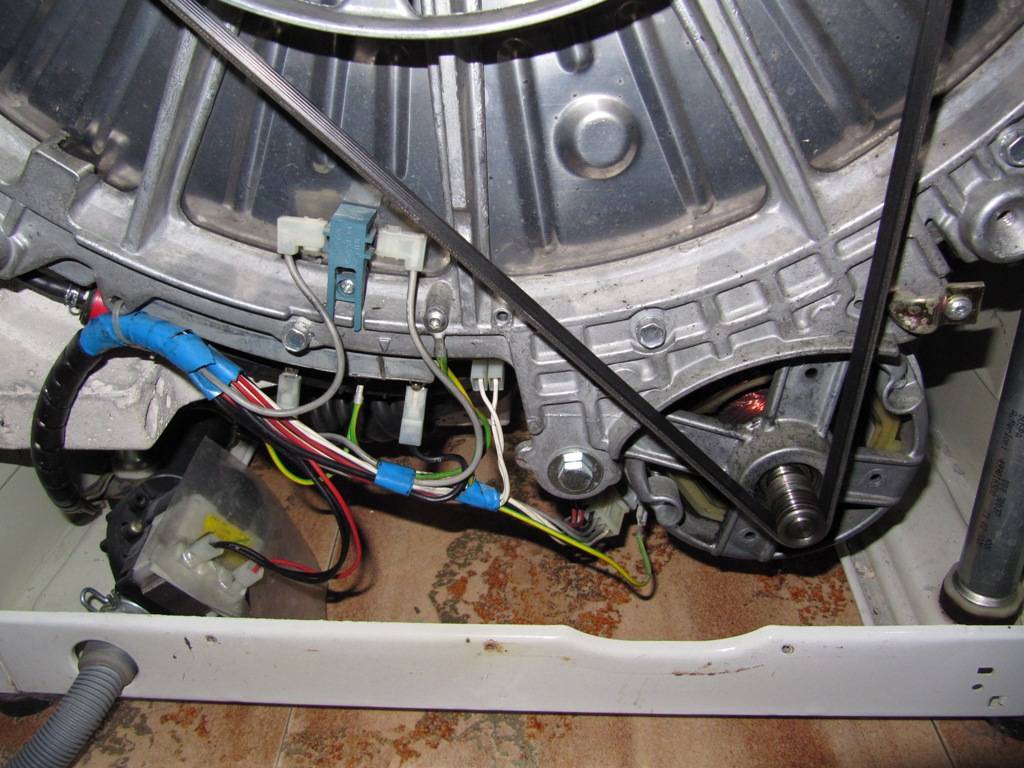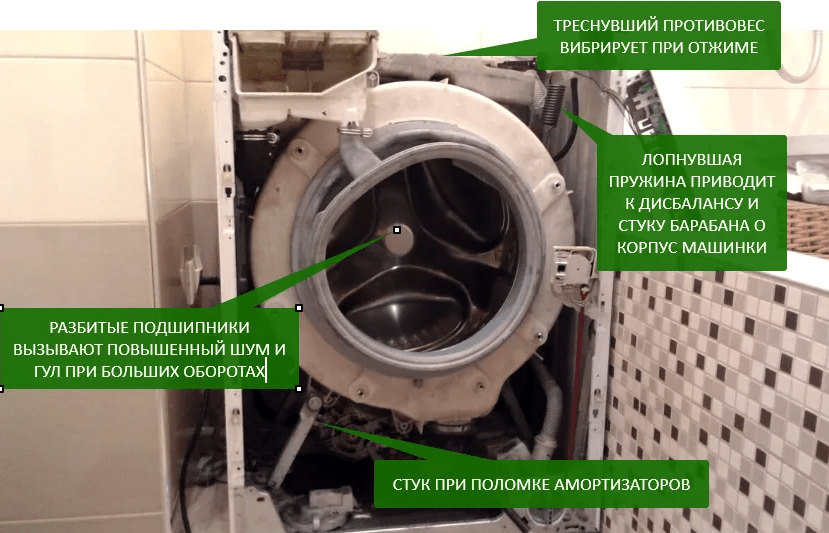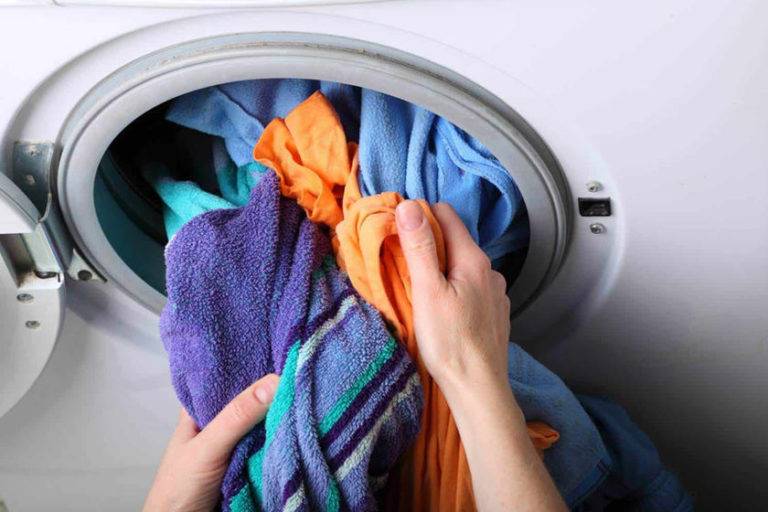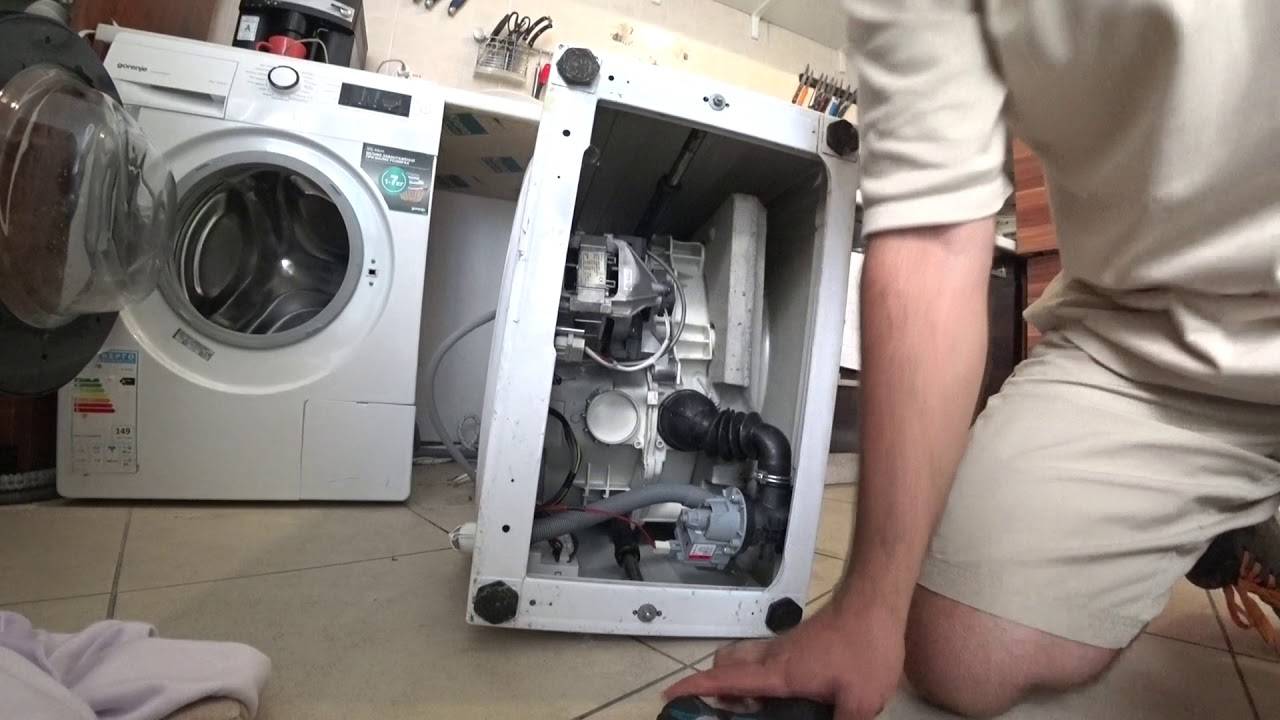Control box problems
It should be noted that problems with spinning very rarely arise due to malfunctions in the control unit. Usually, a malfunction of the control board manifests itself not only in the impossibility of realizing spinning, but also in other stages of washing.
If there is a problem with the control board:
- wash programs can jump over one another;
- the machine freezes;
- the selected washing program cannot end in any way, but after restarting the machine everything returns to normal;
- the sensors on the control panel flash erratically.
If you do not observe such oddities, then you probably should not go to the control board, but it is better to check other parts of the machine. If, upon a cursory external examination of the control unit, you notice traces of soot, burnt wires, etc., then it is better to seek help from a specialist who knows how to figure everything out.
After all, the control unit is a very expensive and complex element of the washing machine. On average, its cost is 30% of the cost of a car, so it is absolutely not worth it to repair it yourself, and especially in the absence of the necessary knowledge.
The most common reasons why the washing machine won't spin
1. Using the wrong program
If, after the end of the program, the machine has not been drained and enough wet laundry has been removed, the reason may be that a program was set where this function is not used. This mode is for gentle washing of silk, wool and other delicate items.
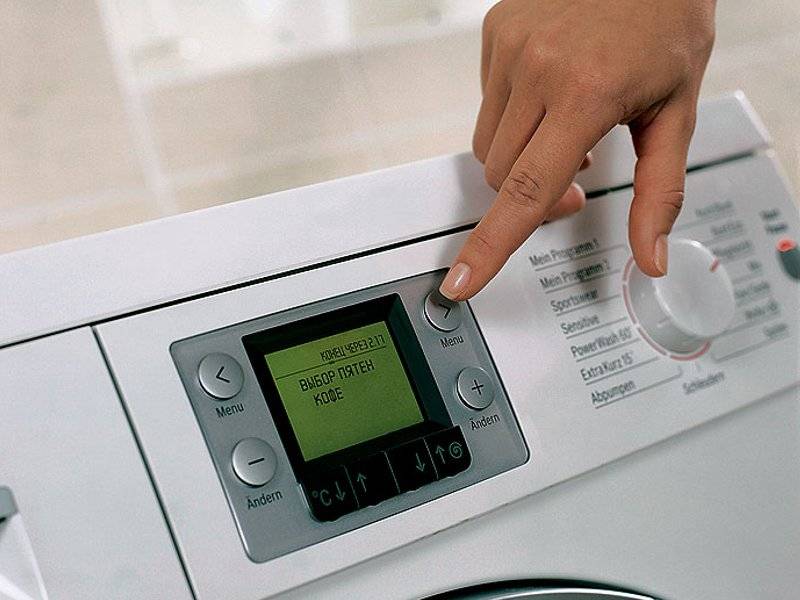 Error loading laundry and selecting a program
Error loading laundry and selecting a program
If the instructions say that the program on which the washing took place does not provide for the spin function, then you should not worry. What to do in this case?
Note
You need to carefully study the instructions and set the required mode.
A situation may also arise when spinning was provided, the machine finished work without wringing out the laundry. It is necessary to check: was there a forced deactivation of the spin during the start?
The listed facts are not malfunctions and arise due to the owner's carelessness.
2. Overloading the washing machine
If the machine does not have a function that allows you to determine the imbalance or overload, then in the process of uneven distribution of the laundry in the drum or a large amount of it, problems may arise.
To avoid this situation, you need to remove half of the laundry, distribute the rest evenly over the drum and start the spin function again.
3. Spinning does not occur due to water in the tank
Before starting the spin program, the machine must drain the water from the tank and from the wrung out laundry. If this does not happen, you need to look for grounds for refusal.
First you need to unscrew and clean the drain filter, and if there are foreign objects there, remove them. Do not forget to check the pockets of things before washing.
Another reason for failure may be a clogged drain hose or drain pipe that is attached from the tank to the pump. Having removed the blockage, you need to check how the machine works again and whether it squeezes out.
4. Failure of the tachometer
If the laundry is often overloaded during washing, then as a result, the machine may work at the load limit. In this case, the failure of such a device as a tachometer, which is located on the shaft and controls the speed in the machine, is guaranteed.
Also, there may be a loosening of the tachometer fastening or failure of its contacts and wiring. The loosened fastening must be tightened and the contacts and wiring must be checked, if necessary, cleaned and insulated. In case of failure of the sensor, it is replaced with a new one.
5.Engine brush wear
The next reason for the breakdown of washing machines such as "Indesit", "Samsung", "Lg" may be the wear of the engine brushes. For this reason, it may not work well without developing the required speed for successfully draining water and spinning the laundry.
It is necessary to disassemble the body of the machine, disconnect the wires and the belt from the engine and check the tachometer and brushes, ring the coils. If faulty parts are found, they must be replaced with new ones.
6. The control module is out of order
One of the most unpleasant breakdowns of automatic washing machines is the failure of its control module, the so-called "brain". He, in fact, manages all programs, receives signals from the sensor and, following them, "gives orders" for the executing elements.
An uninformed owner of a washing machine cannot repair such a breakdown. There is nothing left to do, how to contact a specialist or service center for repair.
7. The presence of a squeak and knock during spinning
The presence of a knock or squeak during washing indicates that small parts that have not been removed from the pockets have entered the area between the drum and the tub.
This can be due to bearing wear. Squeaking sounds may come from the belt. The best option would be to disassemble the machine and see if the bearings are leaking.
Siphons for sinks and sinks: varieties
Do not be upset if over time some functions of the washing machine will not work well. After all, modern models of cars such as "Samsung", "Indesit", "Lg" are perfectly subject to repair and after that they will serve the owners for quite a long time.
The main causes and symptoms of malfunction
To understand that your washer has stopped performing the spin function, you should know the characteristic signs of this negative manifestation:
- the program has finished completely, but there is still liquid in the drum. The drain function does not work;
- things in the drum are rather wet;
- the water is drained too noisy;
- draining occurs as usual, but things are not wrung out;
- the spin function works every other time, the washing machine refuses to respond to the entered parameters;
- the machine hums, as if it is wringing out the laundry, but in fact this does not happen;
- the drain is rather slow.
These are the main signs to watch out for. And what are the reasons why the washing machine does not wring out the laundry? Washing process programmed incorrectly
Often, it is precisely such errors that become the reason for the refusal to wring out the washed things with a machine. For example, we have defined a delicate wash. Some models do not spin on certain programs even when a certain number of revolutions is assigned as an add-on. You just need to check which mode is defined by you. In order to know for sure in which case the washing machine will wring out things, and when not, it is recommended to study the instruction manual, in which such things are painted in a detailed way. The problem can be solved simply - the spin function is turned on separately, then the programs in which it is present are selected
The washing process is programmed incorrectly. Often, it is precisely such errors that become the reason for the refusal to wring out the washed things with a machine. For example, we have defined a delicate wash. Some models do not spin on certain programs even when a certain number of revolutions is assigned as an add-on. You just need to check which mode is defined by you. In order to know for sure in which case the washing machine will wring out things, and when not, it is recommended to study the instruction manual, in which such things are painted in a detailed way. The problem can be solved simply - the spin function is turned on separately, then the programs in which it is present are selected.

Uneven loading of things.When one heavy thing is put into the drum, or a little lighter, the machine is not able to correctly distribute them around the drum. From this, an imbalance appears, a particularly sensitive sensor begins to register significant vibration, the machine lowers the number of revolutions in order to keep the drum from unpleasant shaking. This happens when the loaded laundry gets tangled in a lump. Place several small items on one large item to balance the load. The second option is to carefully distribute the laundry on the drum walls.

- No water is poured out. When it remains in the drum, the washing machine does not spin. The sensor responsible for monitoring the water level sends information about the error, and the drum stops rotating. Perhaps the problem lies in the pump that is responsible for the drain, or the filter is clogged. It so happens that the water leaves, but the washing machine still does not work on the spin mode. In this case, it is recommended to check the sensor responsible for the liquid level.
- The tachometer is out of order. With its help, the number of revolutions made by the drum is controlled. When the element breaks, the washing machine is simply not able to activate the spin process. This type of refusal can be found at any manufacturer. Often it happens from the long service life of the unit. Rarely, but it does happen, when the reason that the machine has stopped squeezing things out, become loose fasteners.
- Malfunction of the module responsible for all control. It is capable of breaking down from voltage surges, defects allowed at the factory, water penetration, erroneous actions during operation and for other reasons. Result - SMA does not squeeze things out. Sometimes the repair work of the module helps, but in most cases the element requires a complete replacement, which implies significant financial costs.
Electric motor failure. This is a rather unpleasant situation. It is likely that there is a break in the winding, or one of the component parts has broken. The result is that the washing machine does not wring out things well. There may be several reasons - voltage drops, wear from a long service life, etc. Upon realizing that the motor has stopped working correctly, it is recommended to contact a service center.
How to avoid serious equipment breakdown
It is advisable not to wait for the breakdown of vital household appliances. It is no secret that sudden power surges in electrical networks can injure electrical devices. To avoid this trouble, use special surge protectors for household needs. They will protect sensitive devices from voltage surges, for example, in the event of an unscheduled power outage.
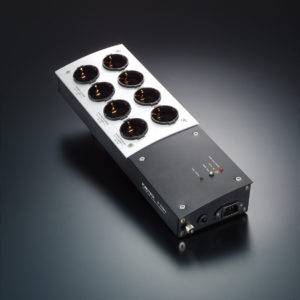
Always check pockets, buttons, small items before loading clothes into the drum. Modern washing machines can be easily damaged by a coin dropped out during washing or a torn off button with sharp edges. They get stuck in working elements, tear rubber gaskets or fly into drain holes. All this is then difficult to detect and fix. Therefore, prevention is very important.
Add just as much powder or gel to the detergent drawer as specified in the instructions. Some people persist in double dosage of laundry detergent, hoping for a more efficient wash. In fact, this is not always justified. Large amounts of media may damage the water sensor or clog the feed chute. This can lead to poor spinning of things. As for the special advertised anti-scale and sediment products, many masters consider this to be a kind of homeopathy among car care products.
As much as you would like to urgently wash all your belongings, do not overload the drum. Even if you managed to fit two sets of bedding, two winter jackets and socks, this does not mean that the drum will be able to spin it all for two hours, and even squeeze it out.Laundry load rates were not invented for nothing. Observe them so that the drum does not break down.
Damage to the tachometer and engine
A tachometer is a device that is necessary to control the number of revolutions made by the drum of the washing machine. Its breakdown can be associated with constant overload. This problem also occurs in the event of a wiring failure in the car. If the Indesit or LG washing machine does not wring out, then it is worth fixing this mechanism and see
Attention must be paid to loosening the fastening. If the device does not wring out things, the sensor itself may be faulty.
In this case, you will have to buy a new one.
Engine brush wear is also a problem. It manifests itself in a decrease in the number of revolutions, which is why the washing machine does not wring out. You can find out the reasons only after disassembling the device.
Why is this happening? The breakdown of the tachometer can be determined by the following criteria:
- sometimes the reason for stopping the operation of this element of the machine is the pressed down key for turning on the spinning mode;
- you can also determine the operating state of the tachometer by measuring the resistance at its contacts;
- the lack of grounding can also indicate that a certain amount of charge, falling on the engine pulley, can negatively affect its operation.
But what to do in such a situation? It is better to turn to those who have more complete knowledge of the structure of the washing machine. Sometimes she does not spin the laundry due to other breakdowns.
What malfunctions can you fix yourself?
In some cases, you cannot do without the help of a professional repairman, but there are situations when interruptions in the operation of the washing machine are caused by frivolous problems that can be solved without even having special knowledge of household appliances.
A washing program has been started that does not include spinning.
If your washing machine is more or less modern, then it probably has several washing modes for different types of fabrics. Some fabrics require particularly careful handling. As a rule, it is natural silk or wool.
The drum of the washing machine is unbalanced
In order for the drum of the washing machine to rotate normally at high speed (namely, this speed is necessary for spinning), it is necessary that the load be evenly distributed over it. If, during the washing process, the laundry gets bunched up, the drum cannot reach the required speed, and spinning does not occur. The problem can be solved by forcibly ending the wash, pulling out the laundry, distributing it evenly and restarting the spin mode.
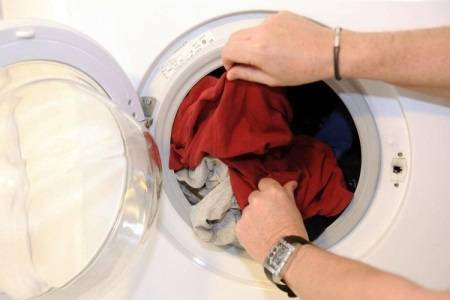
There is a blockage in the sewer pipes
Sometimes the washing machine does not wring out, not because of some malfunction in its mechanism, but for external reasons. One of these reasons is a clogged sewer. For the spin mode to start, it is necessary that the drum of the washing machine has been empty, that is, that the water has drained out. But this is impossible if the sewer outlet is blocked due to a blockage inside the pipe. In this case, water remains in the drum and the spin mode cannot start.
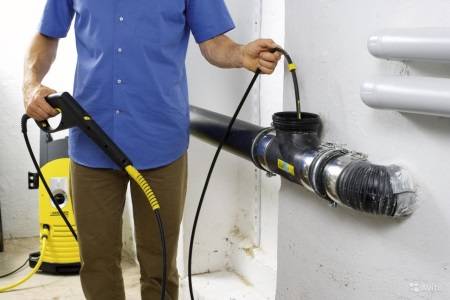
One of the drain elements is clogged
Forgetting to turn out the pockets of clothes before washing puts the washing machine in serious danger. Items forgotten in pockets - coins, paper napkins, tickets, matches, chewing gum and other similar trifles - can cause serious damage. Most often, all this enters the drain system of the unit, thereby interfering with its normal operation.
To determine if this is the problem, first of all, you should remove the drain filter. It is located in one of the lower corners of the washing machine, behind a small door on the front. How to remove and clean this part is detailed in the user manual.
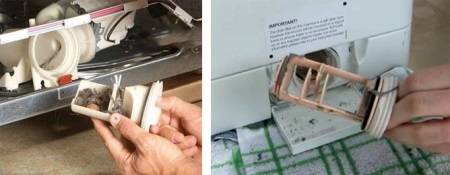
Another element of the drain system that can get clogged is the impeller. It is located directly behind the drain filter.You cannot pull it out, but you can examine it for foreign bodies with a flashlight.
We conclude our inspection by checking the drain hose. If a blockage has formed in it, the hose must be blown out well, or even better - rinsed under a strong stream of water.

See the video of the channel "Repair of washing machines - video" to remove the blockage.
When is the help of a specialist needed?
If, after self-diagnosing, you were unable to establish the reason why the washing machine does not wring out the laundry, then the problem is more serious, and it will be more difficult to cope with it on your own. You need to contact a specialist for help in the following cases.
Water level sensor defective
Modern washing machines are sophisticated electronic devices that have intelligent functions. Therefore, malfunctions in any element affect the operation of the entire system. Most new models of washing machines have a sensor that detects the water level in the tank. If not everything is in order with this sensor, it can signal that there is water in the tank, although in fact it is empty.
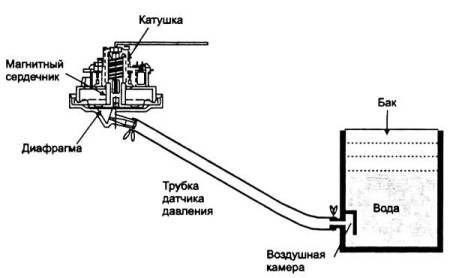
The drain pump has broken
If, before the problems with the spinning were found, the unit made an abnormal noise while the water was drained, most likely the cause of the malfunction lies in the drain pump. If this part of the washing machine is broken, the spin mode will not start. It is very easy to identify this kind of breakdown. Free access to the pump impeller and, without filling the machine with water, start the spin mode: if the impeller does not spin, then the drain pump is faulty and needs to be replaced.
For pump replacement, see the video of the "Washing +" channel.
To identify the causes leading to the malfunction of the drain pump, see the following video.
The heating element broke
A tubular heating element, or heating element, is a very important part of a washing machine. If it fails, often the washing process itself becomes impossible. Most often, the heating element breaks down due to poor-quality tap water (for example, too hard) or due to the use of household chemicals with an aggressive chemical composition.
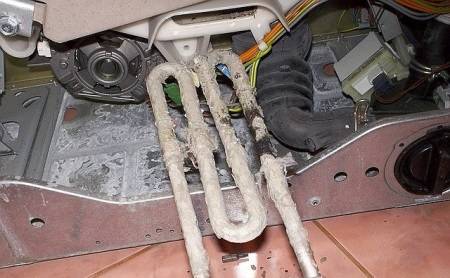
When the heating element is faulty, the water cannot be heated to the required temperature and the washing automatically stops. Modern models of washing machines display an error message in this case.
About replacing the heating element in the LG washing machine, see the video of the channel of Vladimir Khatuntsev.
Malfunction of the tachometer
A tachometer is another important element in the device of a washing machine, the existence and purpose of which is not known to everyone. A tachometer is needed in order to control the speed of the washing machine. When the engine speed decreases (for example, due to overload), the tachometer gives a signal and the unit can be stopped. If the sensor is broken, it will be falsely triggered. Problems with the tachometer can arise for various reasons, but most often it is associated with a problem in the wires connecting it to the "brain" of the machine.
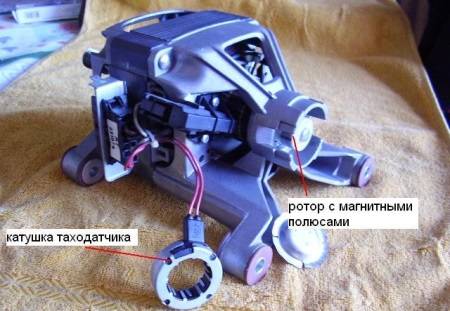
Engine Problems
The stability of the washing machine depends, first of all, on the serviceability of the engine. The engine is a rather complex device, so it is better to entrust its repair to a specialist. However, before contacting the wizard, you can try to diagnose yourself. First, you need to disconnect the washing machine from the mains, move it away from the wall and remove the back cover. Further, we recommend that you take pictures of each step in order to collect everything exactly as it was later.
Carefully remove the engine and check all parts for integrity. For example, carbon brushes can wear out - in which case they become thinner and covered with carbon deposits.
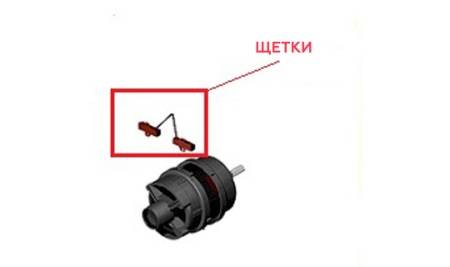
In addition, the engine may get wet due to a leak somewhere. For further clarification of the problem, it is still recommended to call a professional for help.
An example of repairing a Bosch washing machine, which stops spinning at the 6th minute due to engine breakdown as a result of a loose magnet, you can see in the following video.
Electronics problems
The hardware and software module is a kind of "brain" that controls the operation of the washing machine. He is responsible for the functioning of programs and sensors. If a problem occurs in the programmer, it is reflashed or all of its settings are reset. These problems can occur due to power surges or water intrusion into the device. The cause of the malfunction is often also a factory defect.

For replacing the model of electronics in the washing machine, see the following video.
Advice
If the warranty period has not expired, it would be more expedient to contact the service center for help. This should be done immediately, without attempting self-diagnosis and repair. The fact is that electronics that have already been repaired are not accepted for warranty service.
Spin problems can be prevented by paying attention to malfunctions in the washing machine in time. The following "symptoms" indicate that there are any problems:
- after the completion of washing and spinning, the laundry is still too wet;
- during the washing process, the unit produces extraneous noises: hum, tapping, etc.;
- the water suddenly began to drain more slowly than usual.
Don't forget about prevention. After each wash with the machine, you need to carry out several manipulations. First, rinse the detergent dispenser tray. Secondly, blot the sealing gum on the hatch with a dry cloth and clean it of debris. Thirdly, dry the drum by leaving the machine door open for several hours.
To care for your washing machine, you should choose the right household chemicals. Use only those cleaning agents that are designed specifically for this type of household appliance.
How to clean the drain filter
I would like to say a few words about this, because your actions will depend on the specific model of the washing machine:

- In Indesite, the hatch is made of a fragile plastic material and should be opened carefully enough;
- Samsung is distinguished by the presence of special latches that open with a simple screwdriver;
- The flap in Lg will not give in easily to you - you should press the button intended for this;
- Ardo also has access to the filter element from the front, but from the front side of the case.
The unscrewing of each filter is carried out in the same way, only on certain models there are screws in the form of latches. It is recommended that you take a close look at the lid before attempting to unscrew it.
Having organized access to the filtering device, it must be well cleaned and installed in its place. After that, it is recommended to test the washer. It is possible that this was not the only problem.
Why did the malfunction occur?
In automatic washing machines, after starting the wash, many processes take place. First, water is drawn into the tank and rinses the powder out of the prewash compartment. Then the drum of the machine starts spinning slowly. In this way, a pre-wash is carried out.
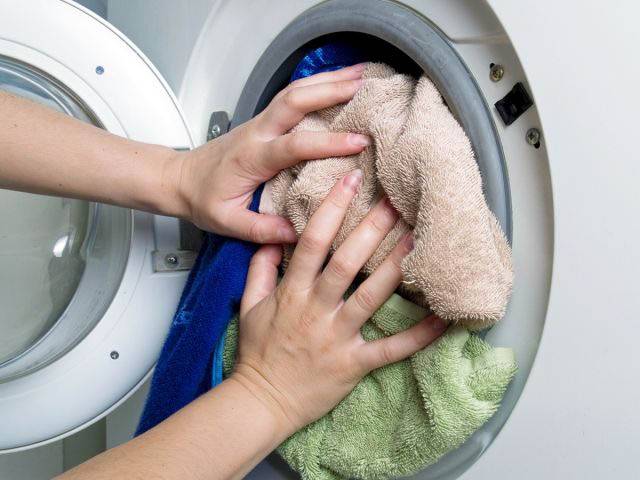
Then the dirty water is drained and clean water is recruited again. This water rinses the detergent out of the main wash compartment. When the main wash process ends, the waste water is drained out again and cleaned up. The rinsing process starts.
Today, automatic washing machines can perform a double rinse when certain wash options are selected. In other words, the appliance draws water twice from the rinse line.
After rinsing, the machine drains the waste water. Next, spinning starts. And at this stage, problems may appear.
The machine does not spin the drum, and after a short period of time it completely freezes. At best, the machine will display a system error. Then the owners will be able to find out about the malfunction. But sometimes the device does not give any errors.
First, you need to check the simplest reasons that have no connection with technical malfunctions.
Such reasons are usually associated with the fact that the owner of the machine performed incorrect actions.
Similar reasons include:
- the drum is overloaded with laundry;
- an overly bulky or heavy thing is loaded;
- the drum of the machine is not loaded enough;
- another washing program is selected (by mistake);
- getting into the tank of a foreign object jamming the drum. As a result, the latter cannot accelerate to high revs.
When the machine is overloaded, the laundry gets knocked into a lump and an imbalance in the drum is formed. When spinning, the drum starts to rotate at high speeds and the laundry knotted into a lump can damage the drive mechanism. To prevent this malfunction, the machine stops the program immediately. To spin, load the drum properly with laundry.
Insufficient loading of laundry into the drum of the machine can also cause the washing machine to freeze. The machine can freeze if you put an overly voluminous thing in it. The latest models of clippers will immediately stop spinning if they recognize it.
The situation is much worse when a foreign object gets stuck in the tank. It can jam the drum or damage the tank. In the second case, water will flow out of the machine. Therefore, the stuck object must be removed immediately.
If it was not possible to find and eliminate the cause of the freeze at this stage, then you can proceed to technical malfunctions. Here, to find and fix a breakdown, you will most likely have to disassemble the machine.
You should not repair the device yourself if you are not sure you can handle it. In this case, it is better to entrust the repair work to the master. Then save time and money.
What to do if spinning in the washing machine stops working?
If during the execution of the program the machine has not completed the last cycle, you must:
- Check the laundry in the drum, it may have gotten into a lump. For this reason, the electronic module stopped the execution of the program. This often happens when washing bed linen, when everything is collected in a duvet cover or pillowcase and the machine cannot evenly distribute the contents. It is worth taking out the laundry from the drum, loading it back separately and activating the "Spin + rinse" or "Spin" function.
- Check the explanation of the program in the instructions. Perhaps it simply does not provide for this regime. In this case, the spin can also be started separately.
- Eliminate drum overload. Models with electronic control are especially sensitive to this. In case of overload, they simply stop the washing process in any mode.
- You can try to run the program again, the program may have crashed.
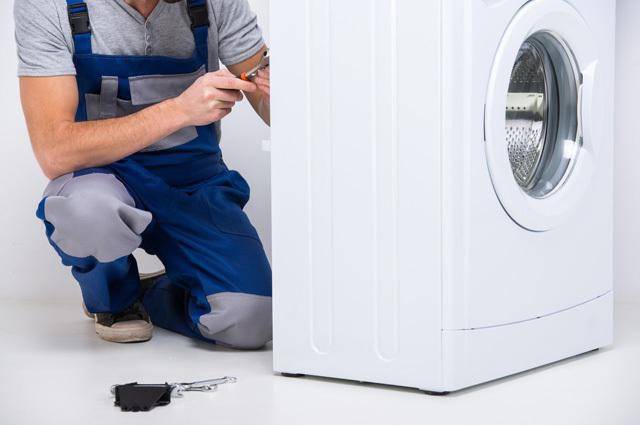
In all other cases, you will have to contact the service center for the help of a qualified technician. Since it is quite difficult for a person without experience to understand which component has failed. In addition, this requires special equipment.
What faults can you fix yourself?
First of all, we advise you to make sure whether the problem really lies in the breakdown of the unit. There are situations when the washing machine does not spin due to the carelessness of its owner. It is possible to eliminate interruptions in the operation of the device in such cases, even without special knowledge in the device of household appliances. The most common user mistakes:
1. No spin cycle has been started. All modern washing machines have several wash programs for different types of fabrics. In modes such as "silk", "wool" or "gentle wash", the spin is not programmed, so the clothes in the drum do not wrinkle or stretch.
In the instructions for the device, you need to find a description of the selected program. If it does not provide for spinning, then most likely there is no breakage. Just select a different wash mode next time or start the spin function of the already washed laundry separately.
Some units have a separate button, by pressing which, you can turn off the spin in any washing program (denoted by the image of a crossed out spiral)
If the laundry remains wet after washing, this option may have been inadvertently selected.
2. Overloading the washing machine. If you have loaded too many things into the device (or their weight exceeds the allowable norm), it is quite possible that the typewriter simply cannot fully spin the drum. A similar situation can arise when too few clothes are loaded and they roll into a ball, thereby causing an imbalance in the device and limiting the drum speed.
To avoid such a problem, always follow the recommendations for the weight of the loaded laundry indicated in the instructions (they may differ for different programs and modes). If this condition is met, and things still get lost in one direction, put special balls for washing into the drum and repeat the procedure.
3. The machine does not drain water. Before the unit can start the spin program, all the water in the tank must be drained. When a blockage forms in the drainage system, the outflow of water into the sewer cannot occur correctly. If your washing machine won't spin, try unscrewing and cleaning the drain filter. It is located behind a small door at the bottom of the front panel of the unit. Also, the drain hose, and sometimes the drain, should be checked for blockages. The branch pipe is rinsed with running water or cleaned with a special cable.
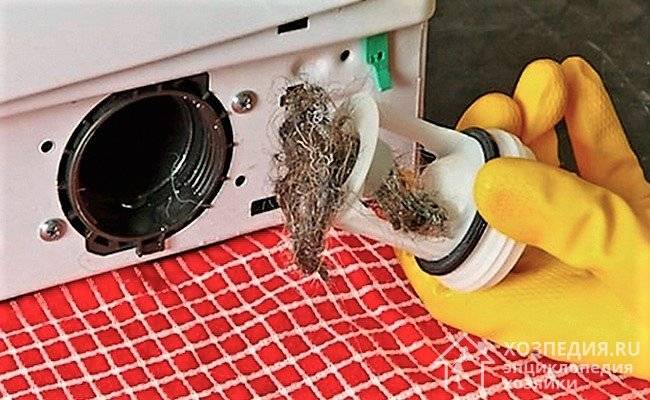 If the drain filter is clogged machine can't drain the water and start spinning
If the drain filter is clogged machine can't drain the water and start spinning
What can you do yourself?
If your Indesit washing machine does not spin, you should make sure that the program is set correctly. Many models support the function of washing at reduced speed. After such a procedure, the laundry at the finish will remain more damp. Particularly sensitive people are able to take this for a breakdown of the spin system. Sometimes, during a delicate wash, things also remain damp, you should study the features of your machine model.

Inexperienced owners of washing machines may not know that washing on delicate silk or wool fabrics does not provide for spinning. This is due to the fact that such fabrics are deformed, and it is impossible to squeeze them out in a washing machine using a centrifuge. Look at the displayed program, perhaps a new batch of laundry was washed with just such an option.
Situation: the washing machine does not spin, the program is set correctly, reduced speed and options are not included. You won't be able to understand why the washing machine doesn't wring out on your own. In this case, the intervention of a specialist is indispensable. The most common causes of failure are associated with the failure of the electronic module of the device.
The gimbal may break, causing the entire module to stop working correctly. Unfortunately, "smart" washing machines, with all the obvious advantages, have a serious drawback: a small breakdown leads to paralysis. A specialist will change the board or re-flash the module, in most cases this helps. If the drain pump breaks down, you can diagnose it yourself. But to replace the pump, it is better to invite a master.
Conclusion
There are enough places in any technique that can become problematic. One thing to remember is that you should not try to self-diagnose or repair your washing machine if there are no special skills. Modern devices of this level are "stuffed" with electronics to such an extent that your every action can lead to irreversible processes.It is recommended that you trust the professionals who will carry out all the necessary steps to get your machine working properly again.



